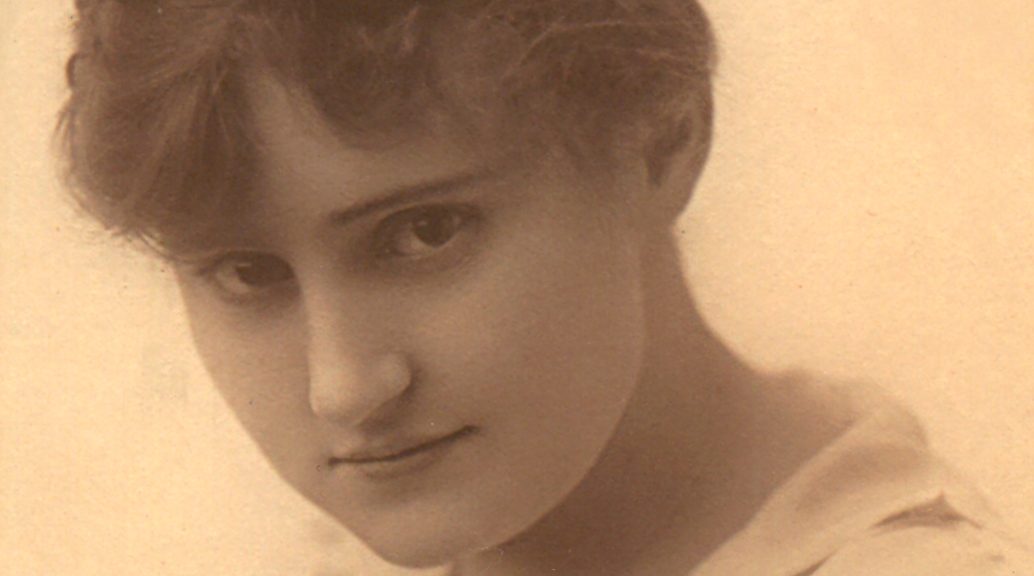
The eyes have it – the alternatives origins of Maybelline
The origins of some brands have been lost, while for other brands they are blessed with a number of alternative stories of their beginnings.
One of these brands is Maybelline, which has two stories.
Both stories have similarities, including the presence of Tom Lyle Williams, sometimes referred to as T.L., and his sister Mabel Williams.
The first and by far most romantic version however introduces us to Chet, the object of Mabel’s affections.
It runs that in 1915 Mabel Williams was getting worried. She had started hearing whispers that her boyfriend, Chet Hewes, was falling for another woman. She confided in T.L., and being a loving brother he decided he must do something about it. Now T.L. was a chemist and was interested in cosmetics so he mixed coal dust and Vaseline. He then told Mabel to apply the resulting concoction to her eyelashes to improve their colour and overall look.
As this love story goes, Mabel then not only won Chet back, but the couple were married a year later. They went on to have three children and lived happily together for nearly 50 wonderful years.
The brand story runs on that T.L. now developed the successful product commercially and christened it “Maybelline”, a combination of the words Mabel and Vaseline.
Unfortunately, for all you romantics, it seems that this is the less likely of the two stories, as the other is drawn from a number of sources including ‘The Maybelline Story’ by Sharrie Williams; who just happens to be a direct descendant of the Williams family.
However the beginning of her story is still the matter of some family debate as she explained in a more recent blog.
“I grew up hearing the story from my grandmother and father. They said she (Mabel) had very pale brows and lashes and wanted to darken them, so concocted a mixture of ash and Vaseline to make them appear darker. Another story came from Mabel’s sister Eva, who said she accidentally singed her lashes and brows while cooking over the stove. Yet another story floated around the family saying Mabel had some kind of disease that made her brows and lashes fall out. I chose the singed brows and lashes version for my book, The Maybelline Story, only to be corrected after the book came out by Mabel’s two daughters, Shirley and Joyce. They say their mother accidentally bleached her brows.”
Whichever of these it was, the year was still 1915. However, in this story it is Mabel who first mixes petroleum jelly with coal dust and ash from a burnt cork, before applying it to her lashes and brows. Tom Lyle Williams is sitting nearby, fascinated as Mabel performed what she called “a secret of the harem” (or alternatively a trick she got from ‘Photoplay’ magazine).
Seeing an opportunity for a product to sell through his fledging mail-order business, he used a home chemistry set to produce a mixture containing petrolatum (Vaseline), carbon black, cottonseed oil and safflower oil. Unfortunately, when his consumer test sample – Mabel – applied it to her lashes, it ran into her eyes and stung them badly.
Undaunted, Tom Lyle sought professional advice and commissioned Parke-Davis, a wholesale drug manufacturer, to develop a more suitable product. The result was a scented cream consisting of refined white petrolatum along with several oils to add sheen. It did not contain any colouring agent but it seemed to ‘brighten the eyes’. He called the product ‘Lash-Brow-Ine’.
 An advertisement for Lash-Brow-Ine featured in ‘Photoplay’ in 1916. As cash came in, it was used to place advertisements in other magazines such as the ‘Pictorial Review’, the ‘Deliniator’, and the ‘Saturday Evening Post’ and so the business grew.
An advertisement for Lash-Brow-Ine featured in ‘Photoplay’ in 1916. As cash came in, it was used to place advertisements in other magazines such as the ‘Pictorial Review’, the ‘Deliniator’, and the ‘Saturday Evening Post’ and so the business grew.
Tom Lyle invested some of this increased revenue in new product development and in 1917, again with the assistance of Parke-Davis, “Maybell Laboratories” began production and sale of a cake eyelash and eyebrow beautifier. The new product named ‘Maybelline’ came in two shades, black (containing lamp black) and brown (containing iron oxides) and was sold for seventy-five cents in a small box with a picture of the Maybell Girl on the top.
 The box included a rectangular cake of product stamped with the name Maybelline, a small bristle brush and had a mirror attached to the inside of the lid. Its claim was that it was the “ideal, harmless preparation for darkening eyelashes and eyebrows”.
The box included a rectangular cake of product stamped with the name Maybelline, a small bristle brush and had a mirror attached to the inside of the lid. Its claim was that it was the “ideal, harmless preparation for darkening eyelashes and eyebrows”.
In 1920, Tom Lyle’s decision to use the name Lash-Brow-Ine came back to haunt him. In that year he lost an appeal over a trademark dispute with Benjamin Ansehl of St. Louis, Misssouri. The loss meant that the business could no longer use the name Lash-Brow-Ine and cemented the use of Maybelline in all advertising after that date.![]()